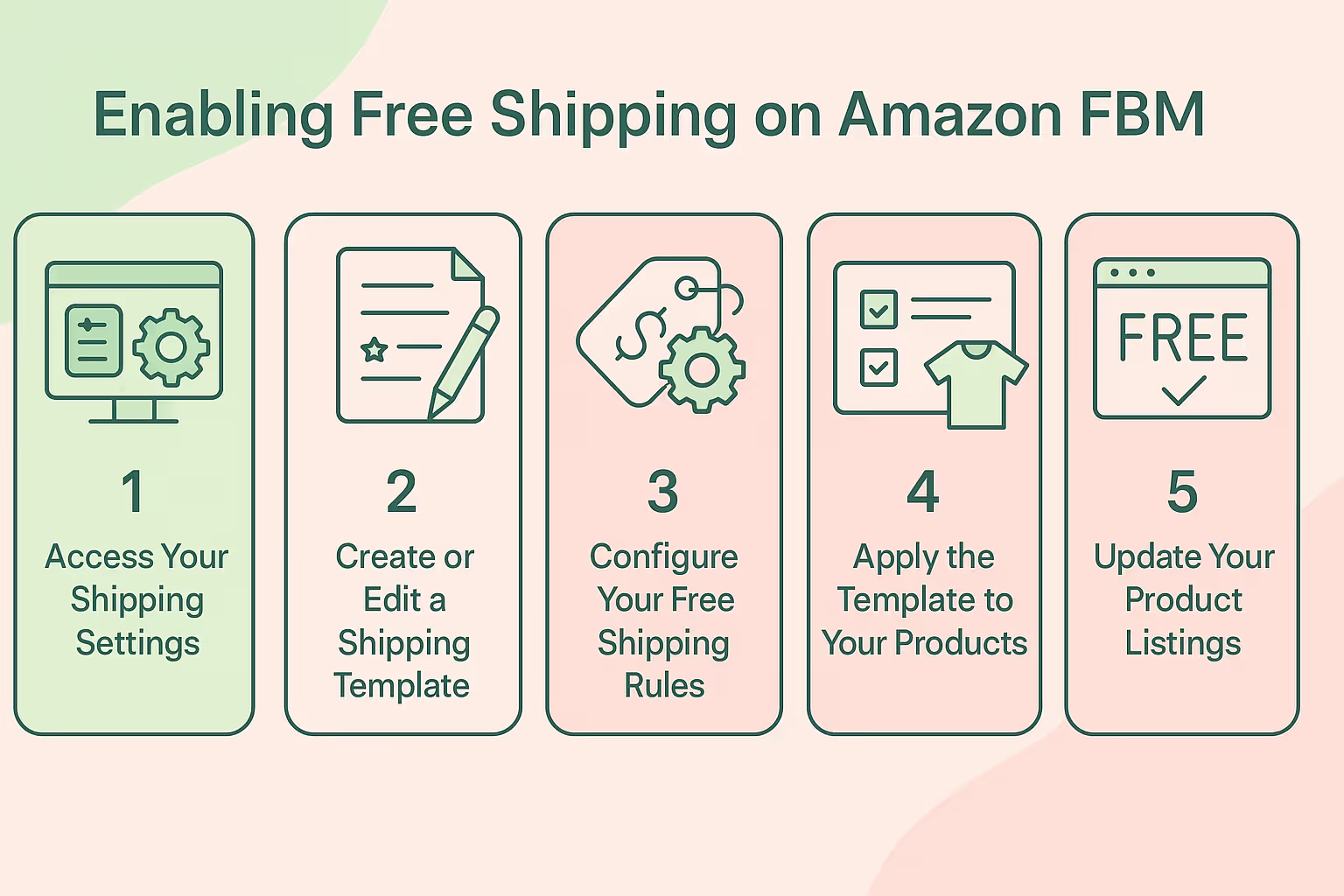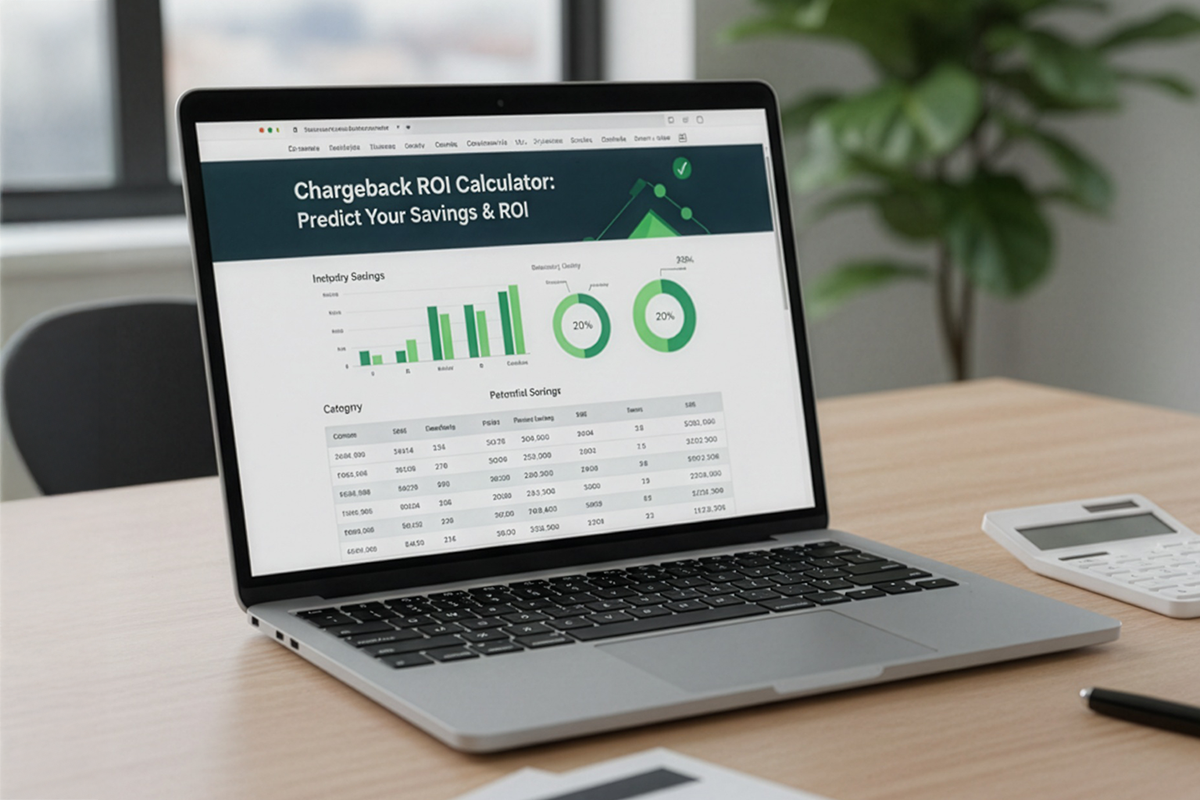
Free shipping is no longer a bonus; 66% of consumers expect it on every order. For Amazon FBM sellers, it can boost visibility, conversions, and overall sales performance.
But offering it without hurting profits takes smart planning. This strategy is key to staying competitive on the platform.
This guide shows you how to enable free shipping on Amazon FBM effectively. You’ll learn how to attract more buyers while protecting your margins.
Enable Free Shipping on Amazon FBM in 5 Steps

Setting up free shipping requires careful configuration in your Seller Central account. Here's the exact process:
1. Access Your Shipping Settings
- Log in to your Amazon Seller Central account
- Navigate to Settings in the top right corner
- Select Shipping Settings from the dropdown menu
- Click on "Shipping Templates."
2. Create or Edit a Shipping Template
You can either modify an existing template or create a new one specifically for products with free shipping.
To create a new template:
- Click "Create a new shipping template."
- Name your template something descriptive, like "Free Shipping Product."
- Select the regions you'll ship to (domestic, international, or both)
3. Configure Your Free Shipping Rules
For each shipping region:
- Set shipping rates to $0.00 for your preferred shipping method (typically Standard)
- Determine whether you want to offer free shipping on all orders or only those meeting a minimum purchase amount.
- If using a minimum purchase threshold, enter that amount (e.g., $25 or $35)
- Configure rates for other shipping speeds (expedited, two-day, etc.)
4. Apply the Template to Your Products
- Return to the Inventory tab in Seller Central
- Select the products you want to offer with free shipping
- Choose "Edit" and then "Change shipping template .ate"
- Apply your new free shipping template
- Save changes
5. Update Your Product Listings
Make sure your product listings indicate free shipping:
- Update titles to include "Free Shipping" if character limits allow
- Add free shipping information in the product description
- Ensure that bullet points mention the free shipping benefit

Strategies to Offset Free Shipping Costs
Offering free shipping doesn't have to mean sacrificing profits. Implement these strategies to maintain healthy margins while still attracting customers with free shipping.
1. Build Shipping Costs into Product Pricing
The most straightforward approach is to incorporate shipping costs into your product price. However, this requires careful market analysis:
- Calculate your average shipping cost per product
- Research competitor pricing to ensure you remain competitive
- Gradually increase prices to absorb shipping costs
- Test different price points to find the optimal balance
Remember that customers often prefer a higher product price with free shipping over a lower price plus shipping fees, even when the total cost is identical.
2. Implement Minimum Order Thresholds
Setting a minimum order value for free shipping encourages customers to add more items to their cart:
- Analyze your average order value and set the threshold slightly higher
- Consider your product range and typical customer behavior
- Test different thresholds to maximize conversion while ensuring profitability
- Communicate the threshold to customers
According to research, setting the free shipping threshold 10-15% above your average order value can increase order sizes by up to 30%.
3. Optimize Your Product Mix
Not all products are suitable candidates for free shipping. Focus on:
- Higher-margin items that can absorb shipping costs
- Lightweight products with lower shipping fees
- Products that rarely require returns
- Complementary products that encourage multiple-item purchases
Pro tip: Consider partnering with a fulfillment provider that offers optimized shipping rates and strategic warehouse locations to minimize your shipping costs while maintaining fast delivery times.

4. Negotiate Better Shipping Rates
As your volume increases, you gain leverage with shipping carriers:
- Contact multiple carriers for competitive quotes
- Consider regional carriers for specific delivery zones
- Use shipping software that compares rates in real-time
- Bundle shipments when possible to qualify for bulk discounts
Getting your setup wrong can cost you sales or trigger account issues. Here’s a quick-reference table to help you configure everything right the first time.
Advanced Free Shipping Tactics for FBM Sellers
Once you've implemented basic free shipping, consider these advanced strategies to maximize its effectiveness.
Geographic Shipping Rules
Not all locations cost the same to ship to. Amazon allows you to create region-specific shipping rules:
- Offer free shipping only to the continental US locations
- Create separate rules for Alaska, Hawaii, and US territories
- Consider different minimum order thresholds for remote locations
Seasonal Free Shipping Promotions
Instead of year-round free shipping, consider strategic promotional periods:
- Holiday shopping seasons (Black Friday, Christmas)
- Summer sales events
- Competitor-specific timing to capture market share

Temporary free shipping promotions create urgency and can be more cost-effective than permanent programs.
Product-Specific Free Shipping
Rather than offering free shipping on your entire catalog, consider:
- Free shipping only on specific product categories
- Free shipping on new private label product launches to drive initial sales
- Free shipping for products with higher margins
This approach is particularly effective for sellers with diverse product catalogs spanning multiple categories, weights, and price points.
For example, if you sell private label skincare products, these typically have higher margins and lower shipping costs compared to heavier items.
Common Pitfalls to Avoid When Offering Free Shipping
Even experienced sellers make mistakes when implementing free shipping programs. Here are the most common pitfalls:
1. Not Accounting for All Shipping Costs
Beyond the carrier's base rate, consider:
- Packaging materials
- Handling time and labor
- Insurance and tracking
- Return shipping costs
These "hidden" expenses can quickly erode profits if not properly factored into your pricing strategy.
2. Setting Unrealistic Delivery Expectations
When offering free shipping, clearly communicate:
- Expected delivery timeframes
- Any shipping exclusions or limitations
- Processing times before shipment
Unmet delivery expectations lead to negative reviews, regardless of whether the shipping was free.
3. Failing to Analyze Performance Data
Regularly review:
- Conversion rate changes after implementing free shipping
- Average order value fluctuations
- Overall profit margins
- Return rates for free shipping orders
4. Ignoring International Opportunities
Many FBM sellers limit free shipping to domestic orders, missing international growth potential. Consider:
- Offering free international shipping with higher minimum thresholds
- Creating country-specific promotions for target markets
- Partnering with international fulfillment services
Measuring the Impact of Your Free Shipping Offer
After implementing free shipping, track these key metrics to evaluate success:
- Conversion Rate: Compare before and after implementing free shipping
- Average Order Value: Monitor changes in basket size
- Cart Abandonment Rate: Should decrease with free shipping
- Buy Box Win Percentage: Should increase with competitive shipping offers
- Overall Profit Margin: Ensure free shipping isn't eroding profitability
Most sellers see a 15-25% increase in conversion rates after implementing free shipping, though results vary by product category and price point.
Taking Your Amazon FBM Business to the Next Level
Free shipping is just one element of a successful Amazon FBM strategy. To truly maximize your potential:
Explore Multi-Channel Fulfillment
Many successful Amazon sellers expand to other platforms:
- Set up a Shopify store with the same free shipping policy
- List products on Walmart, eBay, and other marketplaces
- Consider using a fulfillment solution to manage inventory across multiple channels while maintaining consistent shipping policies.
Invest in Brand Building
As competition increases on Amazon, brand strength becomes increasingly important:
- Develop professional packaging that enhances the unboxing experience
- Implement post-purchase email campaigns to build customer loyalty
- Consider private labeling products to differentiate from competitors.
Automate Your Shipping Workflow
As order volume grows, efficiency becomes critical:
- Implement shipping software that integrates with Amazon
- Create standardized packing procedures
- Consider batch processing for orders
- Set up automated tracking updates
Straight from the Experts: Use Return Data to Optimize Free Shipping
Seasoned FBM sellers know that returns can quietly eat into profits, especially with free shipping. While most focus on outbound costs, return-related shipping data is just as important.
Review your return reports in Seller Central. Identify which SKUs have higher return rates or costly reverse logistics. Adjust your strategy by excluding high-return items from free shipping or modifying product descriptions to reduce confusion. You can also limit free returns to high-margin products only.
This less obvious tactic helps you maintain profit margins while still offering competitive shipping.
Making Free Shipping Work for Your Amazon FBM Business
Free shipping isn’t just a perk, it’s a smart business move that can boost visibility, conversions, and customer growth on Amazon FBM. When done right, it strengthens your competitive edge without cutting into profits.
Start small: test free shipping on select products, track results, and refine your strategy. Analyze your shipping costs, adjust pricing, and apply the steps in this guide to stay ahead of the competition.
FAQ
Related blogs

Chargeback ROI Calculator: Predict Your Savings and ROI in Under 10 Seconds
.avif)
Safety Stock Calculator: Instantly Find the Right Buffer Stock for Any Product
.avif)
Cart Abandonment Rate Calculator: Understanding and Maximizing Your E-Commerce Conversions
.avif)

